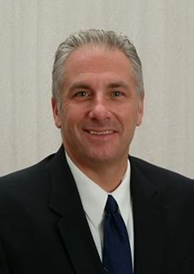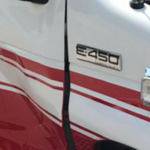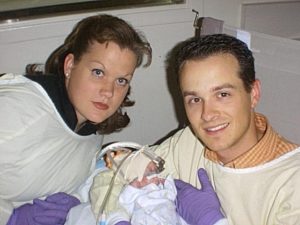When your units get hit by a third party and the vehicle is out of service, are you getting Loss of Revenue for the downtime while the unit is being repaired? Whether you answered yes or no to that question, reading this article will be the one of the most lucrative uses of your time this year.
 A call comes in and your dispatcher does a perfect job of answering and scheduling the run. The EMT’s jump into the clean, fueled, and well stocked ambulance responding to the call. Then from out of nowhere, a car turns directly into the ambulance’s path rolling through a stop sign. Now what? You have two paramedics stranded on the side of the road who will be spending the next few hours on paperwork and drug testing. In addition, all the drugs and small equipment need to be removed or secured. Hopefully you have another unit to dispatch or your competitor may have already been called.
A call comes in and your dispatcher does a perfect job of answering and scheduling the run. The EMT’s jump into the clean, fueled, and well stocked ambulance responding to the call. Then from out of nowhere, a car turns directly into the ambulance’s path rolling through a stop sign. Now what? You have two paramedics stranded on the side of the road who will be spending the next few hours on paperwork and drug testing. In addition, all the drugs and small equipment need to be removed or secured. Hopefully you have another unit to dispatch or your competitor may have already been called.
What happens next is key to getting maximum recovery for your losses caused by the accident.
Key items that help maximize your recovery from accidents:
- Educate and equip fleet drivers with the tools necessary to collect key accident information at the scene and relay it. This includes a description of the accident, clear color pictures of the accident scene, the damaged vehicles, and third-party driver’s license and insurance information.
- Gather as many witnesses as possible and statements from both drivers.
- On board videos are great, but if not, having a smart phone video of the damage and intersection can be very helpful if the liability is in question.
- Get an accurate and thorough estimate. Be aware that, for the most part, insurance companies are motivated to pay out the least amount possible to get the claim settled. Their adjusters are typically not trained accurately determine the damage to specialty vehicles or the equipment they may contain. Using a TPA with strong experience with commercial fleets is critical.
We are surprised how many firms don’t realize or understand what they are entitled to recover because of an accident where their driver was not at fault. Essentially, the law supports that the owner is entitled to the use of their “chattel” and compensation pursuant to the same. Here is an interesting titbit. Chattel is originally a Latin and old French term referring to moveable personal property. A good term to throw out at the next risk managers meeting to impress everyone. With that said, what you are entitled to and what shows up in your mailbox are two drastically different things. Insurance companies are motivated to pay the least amount possible and delay that payment as long as possible.
Most people assume that insurance companies make money when they generate more in premiums than they pay out in losses and expenses, but for the most part that’s not true. Most insurers are happy to break even on their underwriting and make their money by investing the premiums and keeping the investment returns.
What am I entitled to from a “not at fault” accident? There are a lot of factors influencing this, but essentially you are entitled to your physical damage, diminution of value, and loss of use/revenue. How much you are entitled to are the subjective negotiations that firms like ours engage in hundreds of times each day. Driver liability, statute of limitations and minimum policy limits vary from state to state. Typically, the state where the accident happens will be the applicable laws and regulations.
If I have a spare unit to take the place of the damaged vehicle, am I still entitled to Loss of Revenue? The short answer is yes, but getting the carrier to ink the check is another matter. There are real costs of having a spare unit which is why the law supports the loss of the use as a recoverable item. Acquisition cost, maintenance, licensing, certification, insurance, and storage are all costs incurred by having a spare unit.
Pursuing Loss Recovery
The following are steps fleets can take to help maximize recovery:
- Pursue all possible recoveries. There is often potential recovery from the third-party drivers in the form of an umbrella policy, company policy, or personal assets. Driver liability, statute of limitations and minimum policy limits vary from state to state. The key is to know which accidents offer what potential in which states, and then to pursue recovery using the latest industry tools as quickly as possible.
- Follow insurance industry documentation standards. The required forms need to be properly completed and submitted to the third-party driver’s insurance carrier. Knowing insurance industry regulations, standards, and the law are key to move the carriers to action. Technically, a carrier can wait 30 days after receiving a demand before taking action on the claim.
- A key component to Loss of Revenue is accurate records showing the income the unit generated prior to the accident. This is the hardest to recover and gets the most pushback from the insurance companies. Putting the data in a format that meets the insurance company’s needs varies by company.
- Even after the carrier has agreed to pay, be prepared to make a lot of follow-up calls and emails to get your claim paid. A common tactic used by carriers is to drag out the claim hoping you will either give up or accept less. Essentially wearing you down.
The second key recovery component is Diminution of Value (DV), or Loss of Market Value the vehicle suffers even after it is repaired. Age of the vehicle, miles, condition, and other factors determine this amount. Without a strong recovery plan or Third Party Administrator (TPA), we see significant diminution of value left on the table. The key here is strong data which supports your valuation utilizing use multiple sources and have extensive experience and a successful track record for recovering DV.
Getting accurate value when a vehicle is a total loss. The term “Total Loss” is an insurance term lacking legal definition. Carriers have often used title branding laws to determine if a vehicle is a “Total Loss”. While each state has different criteria for “branding” titles, vehicles can, and have been, paid as total losses with damage percentages well below the title branding statutes. Carriers often tout statements such as “Federal Guidelines” or “State Statutes” when attempting to settle claims. More accurately, legal entitlements are based upon what is called the Restatement of Torts, and defined by case law in each state. Typically, property and casualty insurance adjusters don’t understand these laws and again are motived to pay out the minimum possible. Engaging a firm that specializes in commercial fleet claims can provide an arm’s length transaction necessary to be pro-active on the front side in setting the claim up properly, which usually results in a higher recovery.
So how do you win at the recovery game? Well unfortunately you are in a game where the opponent is highly motivated to not pay or pay the least possible, has their own set of rules on how much you should get, and make most of their profit on dragging out a payment when they finally do decide to pay.
 There are essentially three routes you can pursue.
There are essentially three routes you can pursue.
- Handle the claims yourself. Unless you have extensive knowledge in the law and insurance industry, plus have ample time to talk to the voicemails of insurance carriers, this option may not be ideal.
- Let your insurance company handle the claim. They will pay your Physical Damage, but rarely does the policy have coverage for Loss of Revenue and Diminution of Value.
- Hire a TPA (Third Party Administer) to handle the claims for you. Select a firm with a long track record, experience with specialty vehicles, adequate technology, a strong legal department, and specializes in Loss of Revenue recovery. Make sure their fees are performance based and they only win if you do. They can recover Loss of Revenue, Diminution of Value (inherent and repair related) and other costs typically not recovered.
Few fleets have the number of trained personnel in each of these areas to adopt these best practices. If the fleet’s resources are already stretched to capacity, consider outsourcing to a TPA. The chances are the partnership will yield state-of-the-art best practices and more than pay for itself.
I hope you found this article helpful, don’t hesitate to contact me with any questions or to learn more.
 Brian J. Ludlow is Executive Vice President for Alternative Claims Management. He is an entrepreneur and consultant to the insurance, financial, and transportation industries. Brian specializes in disruptive technologies. His firm has transformed the accident claims recovery process.
Brian J. Ludlow is Executive Vice President for Alternative Claims Management. He is an entrepreneur and consultant to the insurance, financial, and transportation industries. Brian specializes in disruptive technologies. His firm has transformed the accident claims recovery process.
bludlow@AltClaim.com | 231-330-0515









